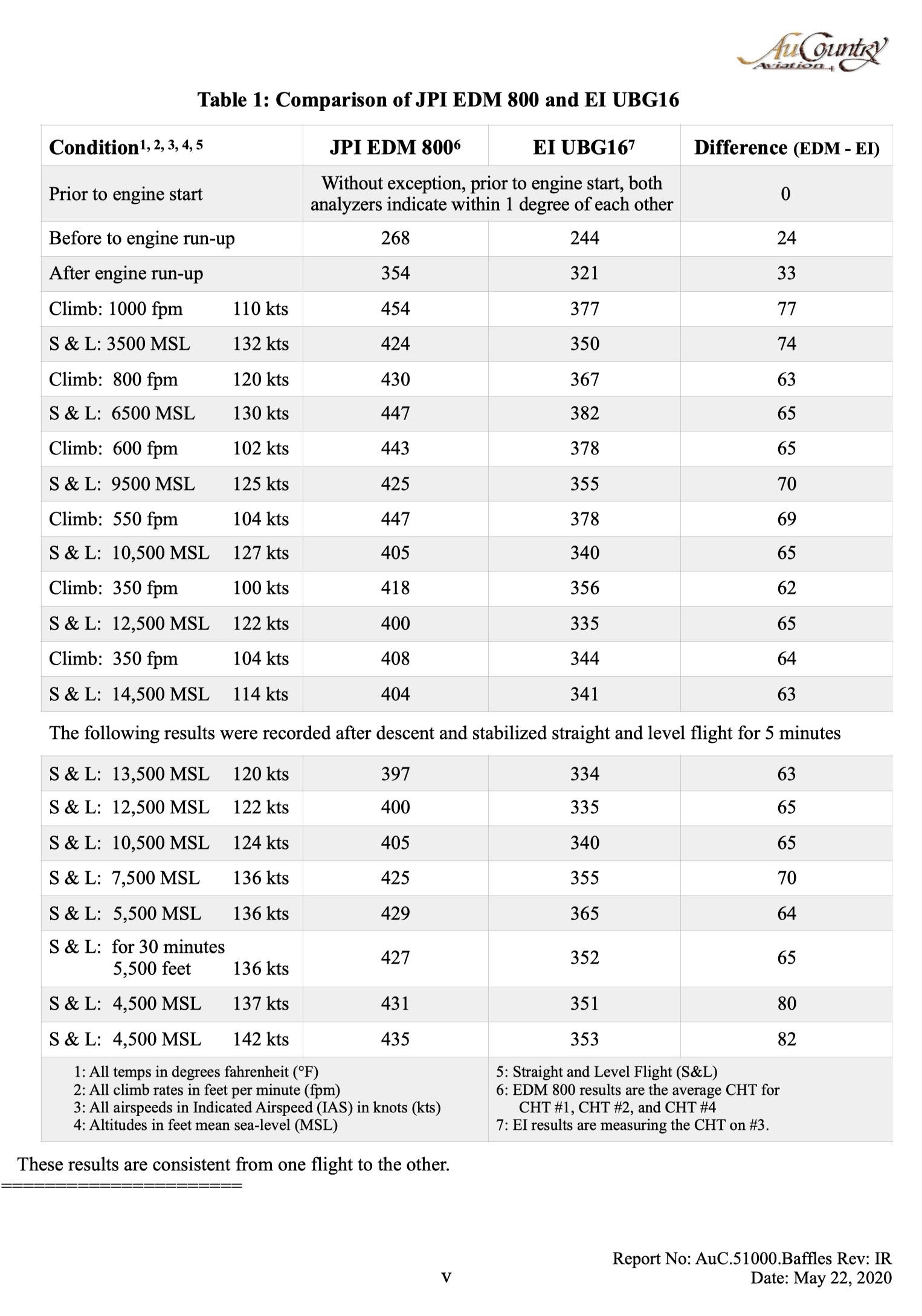All Engine Analyzers are Not the Same
The bottom line: "If you just want to see lower CHTs and you have a JPI, install an EI. Suddenly, like magic, your engine is running
40 to 80 degrees cooler. It really isn't any cooler, but, you'll feel good looking at lower CHTs.
Do your homework! The major difference is a JPI uses 'grounded probes' v. 'ungrounded probes' for the EI. Do some homework on the differences.
The response time on an EI is measured in dog years as opposed to instantaneously on a JPI. CHTs lag up to 80 degrees behind the JPI.
How do I know all engine analyzers are NOT the same? I did my own research. Note: This was originally written in 2006.
Summer 2000: I did a firewall forward restoration on a 260 Comanche in 2000. I replaced the Electronics International (EI) engine analyzer (that had been in the plane for the previous eight years) with a JPI EDM 800. The restoration included an overhauled LyCon engine, ported and polished, GAMI injectors, and all new baffles and baffle seals.
First Flight: The first flight was a short one (Chuck, the owner, went alone). He returned after just 15 minutes because the CHTs were going over 430°F during the climb and he'd never seen that before. I assured him that, based on my experiences with the JPI EDM 700s and 800s in my own planes, 430°F was safe. His response, I've been flying this plane for 20 years, I've never seen CHTs over 400 degrees."
Research: Around that same time, I asked Ken Tunnell at LyCon to do a side-by-side test between a JPI and an EI. That never happened. So, in 2006 I decided to do my own testing. I'd compare the JPI EDM 800 I had in my plane (N28747, a 1978 Tiger I bought in 2004) with a used EI UBG16; a donation from one of my customers who wanted a JPI EDM 700 with fuel flow. I installed the EI UBG16 into my plane in a spare 3 1/8 inch opening under the JPI EDM 800. They were easy to read and compare (to each other) with them stacked vertically.
The UBG16 engine analyzer was installed using a separate circuit breaker and the same ground on the engine mount used by the EDM 800. I ran one EI CHT probe through the firewall. I chose to monitor the #3 CHT for my climb-cruise comparisons. The #3 CHT on '747 was typically 3°F to 7°F higher than the #4 CHT. Cylinders #1 and #2 are typically within plus or minus 5 degrees of cylinder #4. The only exception was during climb when cylinders #1 and #2 are as much as 20 degrees F higher than cylinder #3. I flew '747 for a year with the dual engine analyzer setup.
Summary:
1. Temps in the hangar between the two were the same.
2. After startup, the JPI responded quickly to the heating cylinders. The EI woke up eventually.
3. During run-up, the EI CHT lagged up to 40 degrees behind the other 3 cylinders.
4. On climbout, the EI was as much as 80 degrees behind the JPI.
5. On a 3 hr x-country, the EI would get to within 40 degrees of the JPI.
6. Using the EI EGT to lean the engine was a joke. The response time is horrible.
Read on: These results are presented in a document I made on the correct way to install baffles. I copied it here for you to read.
